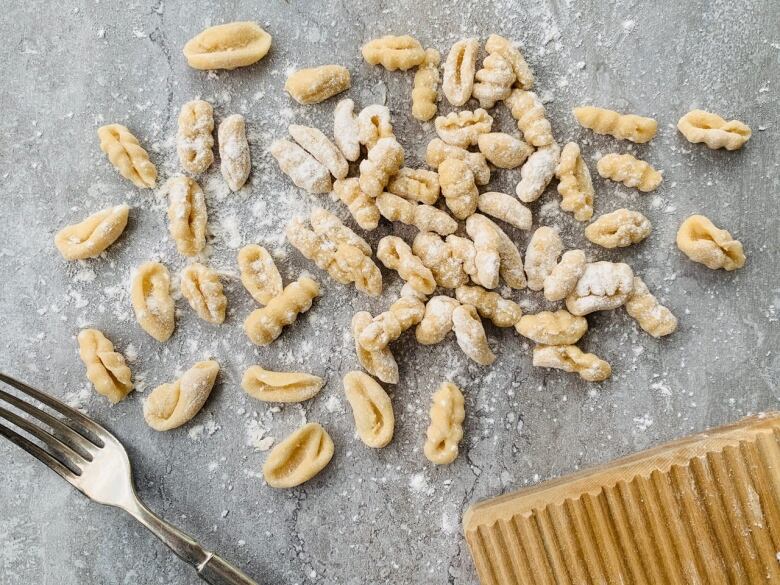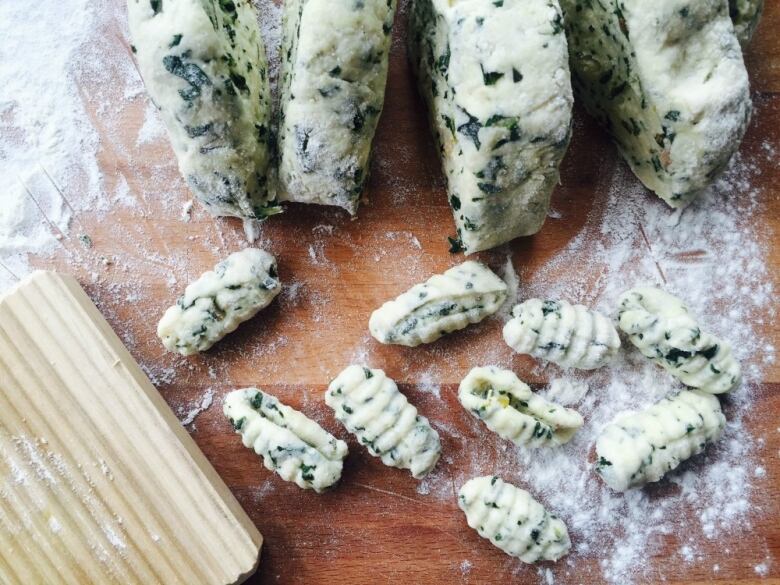Homemade pasta beats the isolation blues
Fresh pasta is simple to make from scratch and a great stay-at-home project

Dry pasta has been one of the staples to fly off store shelves in recent weeks as people prepare virtually all their meals at home, and seek out inexpensive, shelf-stable pantry items to stock up on in order to limit trips to the grocery store.
If you haven't been able to find any, and even if you have, fresh pasta is simple to make from scratch, and is a perfect project when you have more time to spend in the kitchen, or little fingers to occupy.
Best of all, it requires no tools at all, except maybe a fork you don't even need a machine to help roll it out thin and even.
Making the dough is simplebut still has enough variables that it can take time to perfect, if you want to get into it.
All you'll need is flour and eggs all-purpose flour is fine, no need for semolina (a coarser-ground, high protein flour that's sweet and nutty)or fine, powdery 00 flour.
The flour you use, which even varies from brand to brand,and the size of your eggs will determine how much flour you need to incorporate.
This is why, rather than measure out your ingredients and stir them together in a bowl, traditionally the flour is piled on the countertop and a little nest is made in the middle into which you crack the egg and whisk with a fork, then incorporate flour until you have a soft dough.

I usually aim for about a cup of flour and two large eggs, or one egg and one yolk, or one egg and half an eggshell of water.
Some doughs are made with just water, but eggs are more common in fresh pasta though some call for only egg yolks, some for a combination of whole eggs plus extra yolks.
Yolks are largely fat and whites are mostly protein and water, so higher-yolk pastas tend to be softer and richer, with less chew.
There's also the option of making a spinach or other vegetable pasta by using cooked, pureed spinach along with the egg, but let's keep it simple for now.
Salt isn't generally added the idea is that the pasta is seasoned when it's cooked in salted water but there's no reason you can't add a pinch of salt to your dough.
Once you've incorporated enough flour to make a soft, playdough-like dough, knead it for several minutes, until it's smooth and elastic, and then cover and let it rest for at least 30 minutes.
When you're ready for it, you can roll it thin with a rolling pin and use as fresh pasta sheets in lasagna, make ravioli or tortellini, dust the sheets with flour, then lightly roll and slice to make fettuccine or other flat noodles.
You can make small cavatelli, orecchiette or cencioni by rolling the dough into thin ropes, cutting it into bits and shaping with your thumb or finger. Pullit against the countertop until it curls back over itself, making a little shell-like shape that's great for holding onto sauce.
Or try trofie, which is shaped by rolling tiny bits of pasta into small ropes, then dragging a butter knife or bench scraper along it to make it curl, almost like extruded fusilli.
You can let fresh pasta dry by leaving it out on a floured baking sheet for up to 24 hours. It can dry out quickly in Calgary, but will depend on the thickness of your pasta.
- Bookmarkcbc.ca/juliesrecipesto keep up with all of Julie Van Rosendaal's dishes
Or freeze it on a baking sheet, then transfer it to freezer bags to cook later. Fresh pasta typically only takes two to three minutes to cook, and four or five if it's frozen.
Gnocchi is similar, but lighter and coarser, and more like tiny dumplings. Make them with mashed potato or ricotta, an egg, some salt, and enough flour to make a soft dough. Roll bits of the dough the size of your fingertip along a ridged board or the tines of a fork to make their traditional shape.
Gnocchi are great with any tomato sauce, or browned butter melt butter in a small saucepan, then keep it over the heat until it turns brown and smells nutty. Add a leaf or two of sage, or a pinch of dry sage, if you like.

Fresh Pasta
Feel free to play around with just egg yolks or a combination of whole eggs and yolk just incorporate enough flour to make a soft dough.
- 1 cup (ish) all-purpose flour.
- pinch salt, optional.
- 1 large egg.
Pile the flour on the countertop, or in a shallow bowl if you want to contain the mess. You still want to approach it like the tabletop technique, and not just stir everything together in the bowl. Add a pinch of salt if you like, and make a well in the middle.
Crack in the egg, and add half an eggshell of water, about one or two tablespoons.
Stir up the egg with a fork, and then start incorporating the flour from around the egg until you have a soft, tacky, playdough-like dough.
Knead for a few minutes, incorporating more flour if it's too sticky to handle, until it's smooth and elastic.
Wrap or cover with plastic and let rest on the countertop for at least half an hour.
When you're ready for it, roll it out thin with a rolling pin and use as fresh pasta sheets, dust with flour, lightly fold/roll up and slice into ribbons, or shape by rolling into thin ropes, cutting off bits and pulling each with your fingertip on the countertop, or on a textured surface, like a gnocchi board, until it curls over itself, making a little shell or ear shape.
Sprinkle with a bit more flour if you need to, to keep it from sticking, and cook in boiling salted water for two to three minutes, until just tender, or freeze for another day.
Makes about a half pound offresh pasta.

Spinach and ricotta gnocchi
This recipe comes from my good friend Emily Richards, a food writer, home economist and cookbook author. It'sinher cookbook, Per La Famiglia.
- 16 cups lightly-packed baby spinach.
- 1 egg.
- 1 cups ricotta (a 475g tub).
- 2-3 cups all-purpose flour (approx.), divided.
- tsp salt.
In a large skillet, cover and cook spinach over medium heat for about five minutes.
Drain and squeeze spinach well. Chop spinach; set aside.
In a large bowl, whisk together egg, ricotta and spinach.
Gradually stir in 2 cups (625 mL) flour and salt with wooden spoon until a soft dough forms.
Place dough on a floured surface and knead in remaining flour for five minutes to form a smooth dough.
Divide dough into eight pieces; roll each into long, thin strands, about one inch (2.5 cm) thick.
Cut into about 36 one-inch pieces.
Roll each piece across tines of a fork, gnocchi paddle or gnocchi basket.
Place in a single layer on a floured baking sheet. Repeat with remaining dough. Place in the freezer for about one hour or until firm.
Use a flat spatula or wooden spoon to gently scrape the frozen gnocchi off the baking sheet.
In a large pot of boiling salted water, cook gnocchi from frozen for about eight minutes or until they float to the top and are tender throughout.
Drain with a slotted spoon and toss with tomato sauce or butter.
Make ahead: If you want to freeze the gnocchi, once they are firmly frozen, use a spatula to scrape the pasta off baking sheet into a resealable plastic bag and freeze for up to three months.
To make plain ricotta gnocchi, omit spinach and use only two cups (500 ml) of flour to stir in to form soft dough.
You may need to knead in more flour to form a smooth dough.
Makes about two pounds, enough for four to six servings.












_(720p).jpg)


 OFFICIAL HD MUSIC VIDEO.jpg)
.jpg)



























































































